Forums
- Forums
- Duggy's Reference Hangar
- USAAF / USN Library
- Douglas TBD Devastator
Douglas TBD Devastator
Post a reply
- Go to Previous topic
- Go to Next topic
- Go to Welcome
- Go to Introduce Yourself
- Go to General Discussion
- Go to Screenshots, Images and Videos
- Go to Off topic
- Go to Works in Progress
- Go to Skinning Tips / Tutorials
- Go to Skin Requests
- Go to IJAAF Library
- Go to Luftwaffe Library
- Go to RAF Library
- Go to USAAF / USN Library
- Go to Misc Library
- Go to The Ops Room
- Go to Made in Germany
- Go to Campaigns and Missions
- Go to Works in Progress
- Go to Juri's Air-Raid Shelter
- Go to Campaigns and Missions
- Go to Works in Progress
- Go to Skinpacks
- Go to External Projects Discussion
- Go to Books & Resources
-
13 years agoTue Mar 30 2021, 10:27pmDuggy
 Main AdminThe XTBD-1 first flew on April 15, 1935 and nine days later was delivered to Navy for testing. It was designed to a specification for aircraft operating from a new class of carriers the Navy was launching, the first of which was the USS Ranger. On June 25, 1937 Douglas began delivery of 114 TBD-1s and by 1938 the type had proved very successful in trials and combat exercises. There was an additional order for 15 aircraft in 1938 to replenish operational losses.
Main AdminThe XTBD-1 first flew on April 15, 1935 and nine days later was delivered to Navy for testing. It was designed to a specification for aircraft operating from a new class of carriers the Navy was launching, the first of which was the USS Ranger. On June 25, 1937 Douglas began delivery of 114 TBD-1s and by 1938 the type had proved very successful in trials and combat exercises. There was an additional order for 15 aircraft in 1938 to replenish operational losses.
Upon its introduction, the Americans considered the Devastator the most modern and effective torpedo bomber perhaps in the world, and the design often referred to as "radical", but it was nowhere near as successful as the Japanese Imperial Navy's carrier-based torpedo bomber, the Nakajima B5N (Kate), which dealt fatal blows to the US Navy's, Lexington, Yorktown and Hornet.1
There were a number of "firsts" associated with the TBD; the "Devastator" was the first monoplane design ordered for service with the US Navy; it was the first with hydraulic (as opposed to "manual") folding wings; it was the first "all metal" aircraft ordered by the Navy. The carriers Saratoga, Enterprise, Lexington, Wasp, Hornet, Yorktown and Ranger were all equipped with the Devastator as the standard torpedo bomber. And, although Devastator production totaled only 129 aircraft, it achieved a notoriety completely out of proportion to its numbers (as we shall see).
It had a crew of three; a pilot, a gunner facing aft and a bombardier who sat in between. In combat, the bombardier lay prone just behind the engine, peering through a window in the bottom of the fuselage to release the torpedo or bomb. The Devastator was furnished with one forward firing Colt/Browning .30 caliber machine gun operated by the pilot. Depending on the circumstances (and the CO) the forward gun was replaced with a .50 caliber. Exterior indications of which gun was mounted could be determined by the presence of a blister behind the air intake on the starboard side. This blister was a breech fairing for the Colt/Browning .50 caliber M2. Another .30 caliber Colt/Browning was mounted in the rear gunners position. The engine was the Pratt-Whitney 1830-64 Twin Wasp rated at 850 hp. (634 kW). It's wings spanned 50 feet (15.24 m), taking up a lot of room in the cramped innards of a carrier. So, Douglas designed them to fold upwards reducing the space to 26 feet (7.92 m). The wheels folded backwards into the wing, though they were designed to protrude about 10" (254 mm) below the wing just in case the TBD had to make a wheels-up landing. The sleek 35' (10.67 m) fuselage was covered with a "greenhouse" canopy reaching over halfway to the tail.
Near the beginning of the new decade (1940), naval intelligence indicated the TBD might be losing its combat edge to foreign designs and wheels were set in (slow) motion to find a replacement. There seemed to be no rush in spite of the wars heating up in Asia and Europe. A mere 3 years earlier, the Devastator had been state-of-the-art and it couldn't have become totally obsolete in that short of period, or so the thinking went.
Two years later the Japanese bombed Pearl Harbor. At that time the Navy still had a hundred TBDs on the rosters, spread out among the aircraft carriers. By chance, the aircraft carriers were not in Pearl Harbor and escaped destruction when the Japanese assaulted "Battleship Row" on December 7, 1941.
But the Navy's squadron commanders were beginning to worry about some of the planes their men would take into battle, particularly the TBD with its top speed of 206 mph (332 km/h). Intelligence reports on the Japanese Mitsubishi A6M Zero-Sen (Zero) indicated its top speed was well over 325 mph (523 km/h). The fact Japan had such a fast and nimble aircraft came as a great shock to American military planners who had been led to believe the Japanese had only inferior copies of European designs. The Devastator was scheduled to be replaced by the Grumman TBF Avenger. The question was; when? During this initial phase of WWII, the development and delivery of new aircraft was agonizingly slow
During the first five months of 1942, the TBD seemed to lead a charmed life. By February 1942, the carriers were making raids on island bastions in the Marshalls and Gilberts held by the Japanese which were largely successful and the Devastator gave a good account of itself during these battles. On May 7, TBDs were instrumental in the sinking of the Japanese carrier "Shoho" in the Battle of the Coral Sea.
It was during this time when defects were first noted in the Mark XIII torpedo used by the TBD. Many of these torpedoes were seen to strike the target yet fail to explode. Submariners were having the same problems with the Mark XIV Field ordinance men attempted to modify the weapon until the Navy Bureau of Ordinance in Washington sent a direct order forbidding any modifications and assuring everyone the Mk XIII torpedo was faultless. BurOrd stuck with this position in spite of overwhelming evidence to the contrary. It seems the carrier groups took it at face value and looked for solutions in the maintenance and delivery of the weapon. Fortunately, the submariners persisted. Several problems with the torpedoes were eventually located. One problem was incredibly similar to the recent Mars Space Vehicle which "landed" 20 feet (6.1 m) after it impacted the surface due to a failure of technicians to convert altitude to metric units in the guidance computer programming.
The torpedoes had been tested with dummy warheads, that is, the space for the warhead had been filled with water when the torpedo was tested. No one apparently thought to ask how heavy the actual warhead would be, and the cost of the torpedoes entered the picture as a reason to curtail further testing of the torpedo. Due to the difference in weight of the dummy warhead and the actual warhead, the torpedo ran eleven to 14 feet below set depth. Several other problems prevented the weapon from working properly. These problems persisted for over two years because of the bone-headed attitude of BurOrd. Eventually, the top man in the Navy, Admiral Ernest King ordered BurOrd to get off its butt and test live torpedoes.
However, long before the torpedo problem could be solved, operational problems doomed the TBD on the basis of a single mission. The mission began on June 4, 1942 when the TBDs were sent to attack the Japanese Imperial Fleet north of Midway Island and quite suddenly, the worst suspicions of Navy squadron commanders were confirmed.
At 0700 hrs., Torpedo Squadron Eight (VT-8) of the aircraft carrier Hornet launched 15 TBDs, VT-6 of the Enterprise launched 14 TBDs. VT-3 on the Yorktown launched 12 TBDs. Due to cloudy weather, they lost their fighter escort and arrived at the scene of the battle without "top cover". Japanese A6M "Zeros" immediately attacked from the rear while the Imperial Fleet ships put up a wall of anti-aircraft fire from the front. The Zeros attacked while the TBDs were still more than 12 miles from the Imperial Fleet boats and one by one the TBDs splashed in. Not a single torpedo from these planes found a target. Of the 41 Devastators launched by the US Navy aircraft carriers, 37 failed to return to their ships. A loss rate of over 90%! After the Battle of Midway, the Navy struck the Douglas TBD "Devastator" from combat roles and it was relegated to training and communications roles.
Specifications:
Douglas TBD-1 Devastator
Dimensions:
Wing span: 50 ft 0 in (15.24 m)
Length: 35 ft 0 in (10.69 m)
Height: 15 ft 1 in (4.59 m)
Weights:
Empty: 6,182 lbs (2,804 kg)
Gross: 9,862 lbs (4,473 kg)
Max T/O: 10,194 lbs (4,623 kg)
Performance:
Maximum Speed: 206 mph (331 km/hr) @ 8,000 ft (2,438 m)
Cruising Speed: 128 mph (205 km/hr)
Landing Speed: 68 mph (109 km/hr)
Service Ceiling: 19,700 ft (6004 m)
Range: 435 mi (700 km) with Mk XIII Torpedo
716 mi (1,152 km) with 1,000 lbs (453 kg) bombs
Powerplant:
Pratt-Whitney R-1830-64 "Double Wasp" air-cooled radial.
900 hp (671 kW) take-off
850 hp (634 kW) at 8,000 ft. (2,438 m)
Armament:
1 Mk XIII Torpedo - Diameter: 21 in (533 mm), Length: 15 ft. (4.57 m)
Weight: 1,200 lb (544 kg) or 1,000 lbs. (453 kg) bombs
Below XTBD-1


Below first production TBD-1






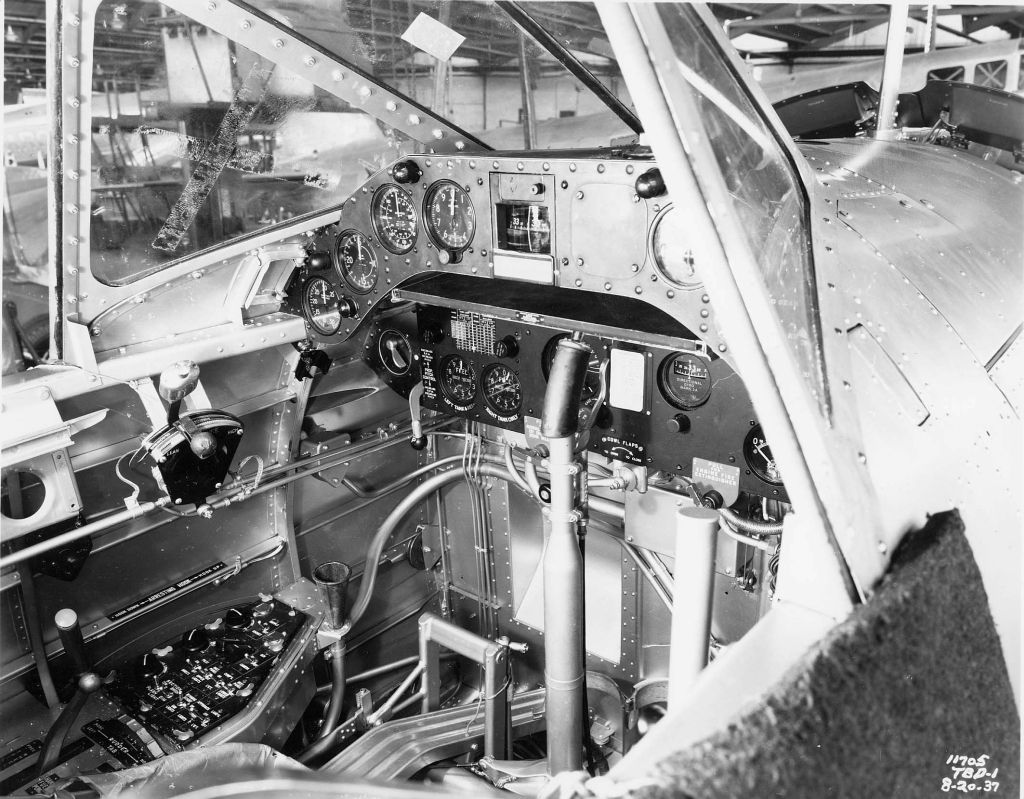



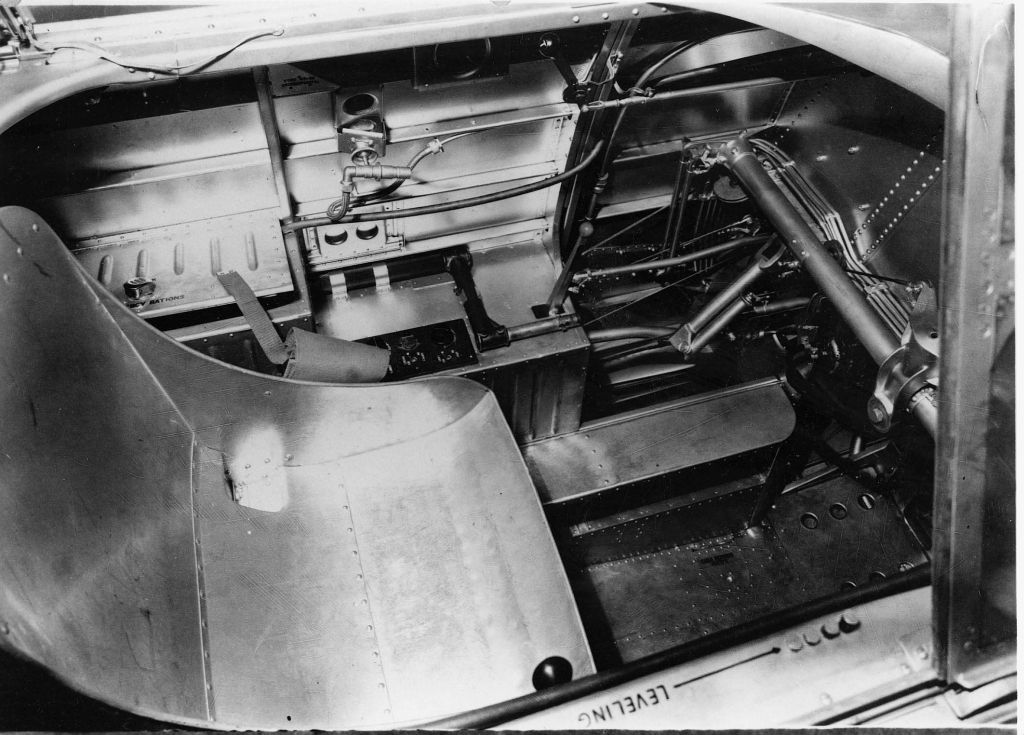




Below Sq aircraft



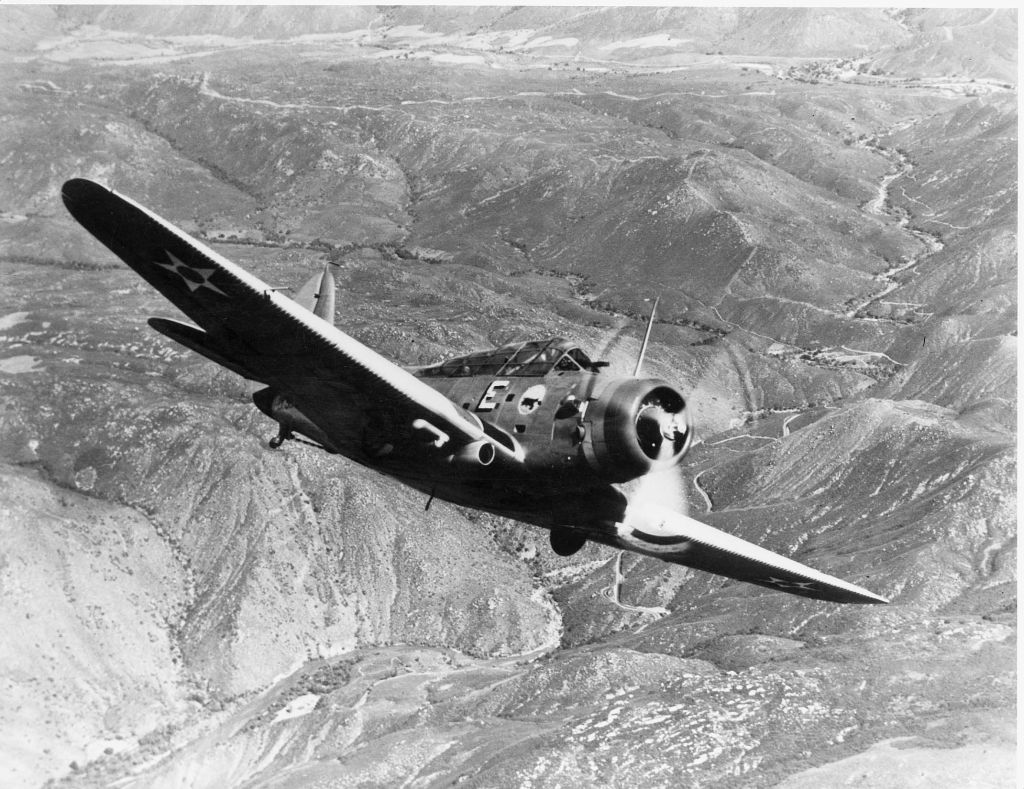






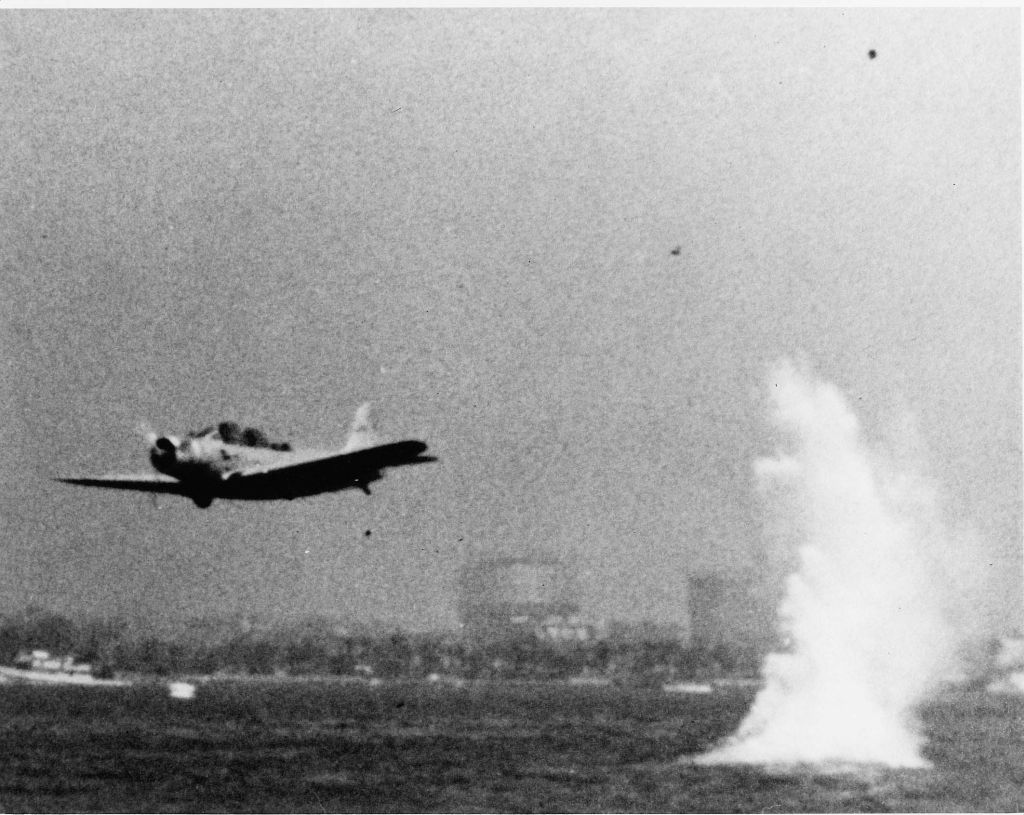










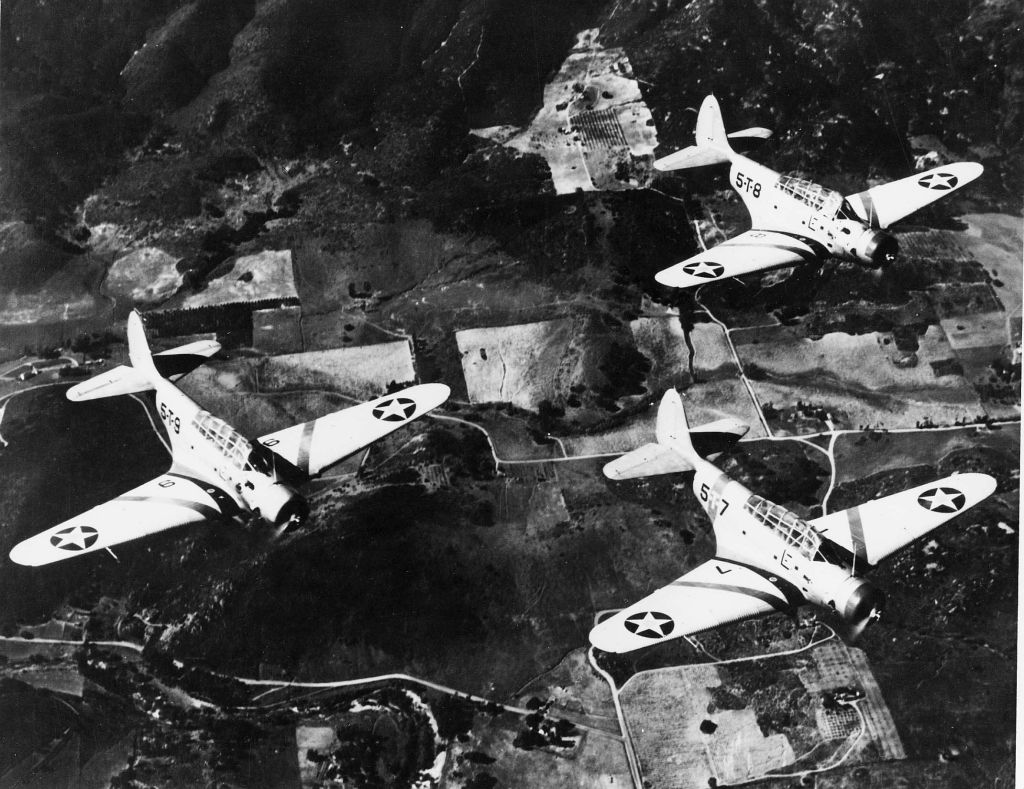
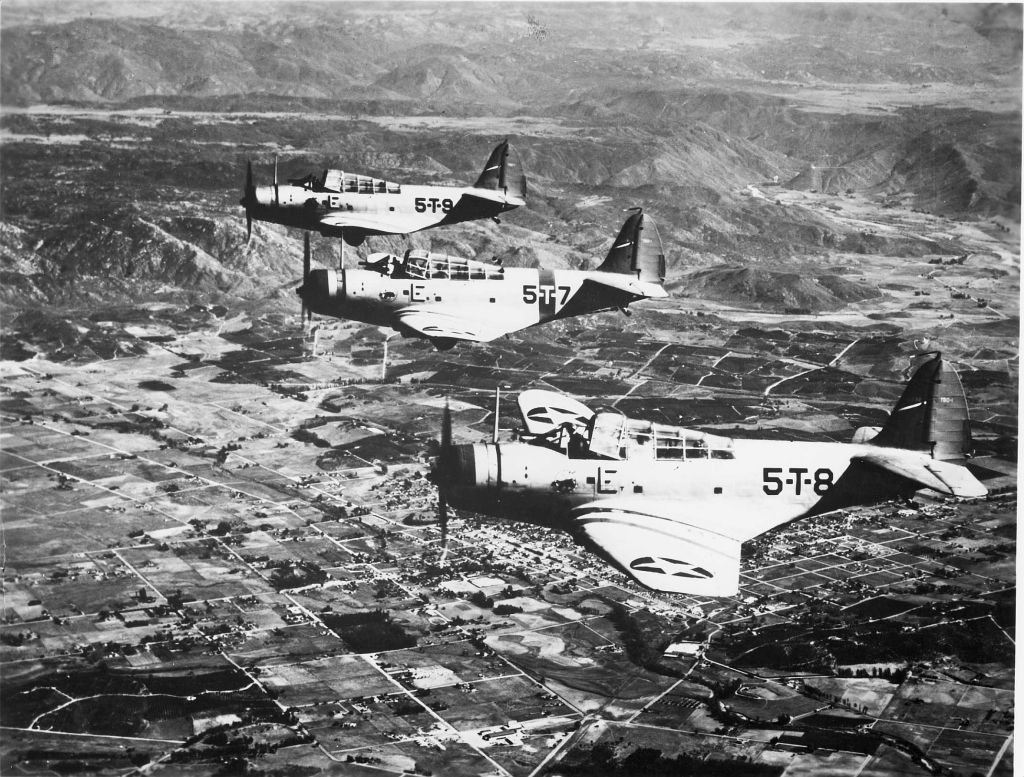




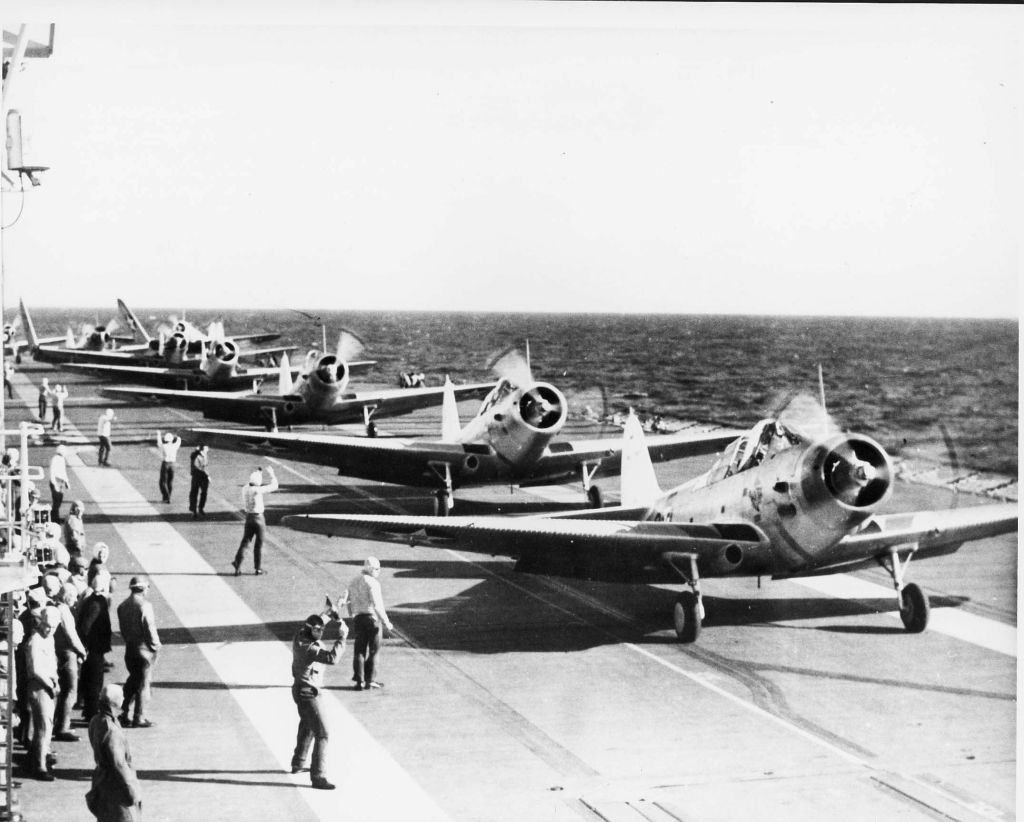








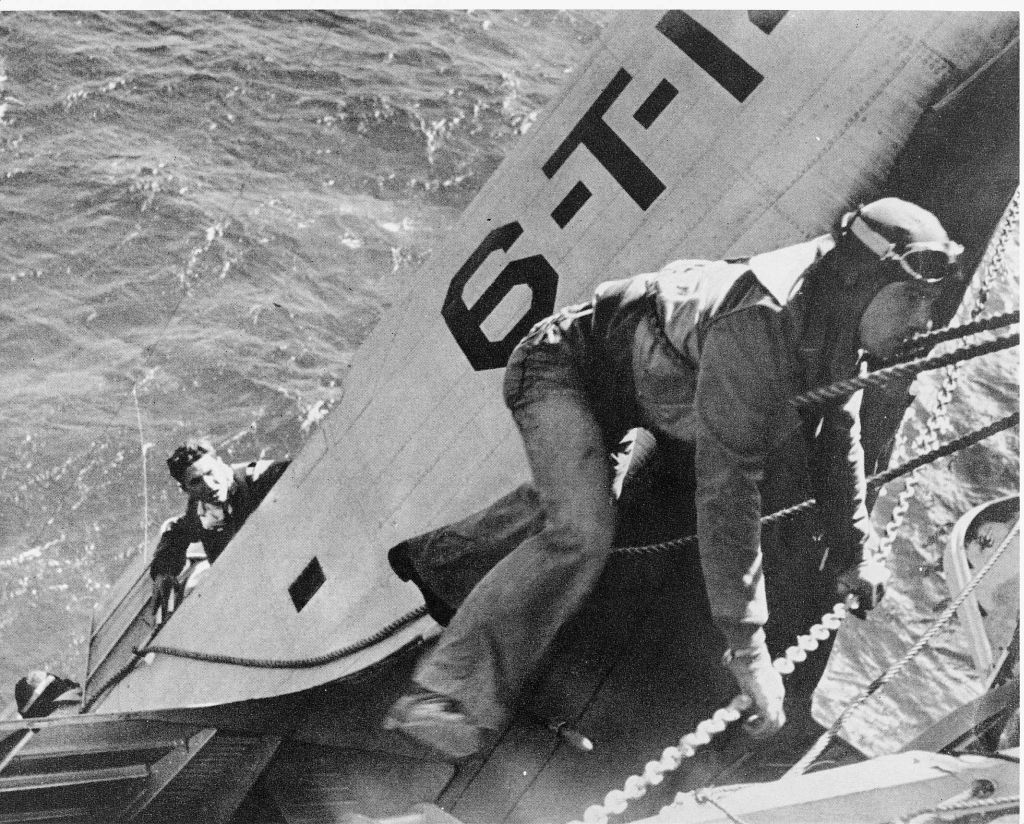












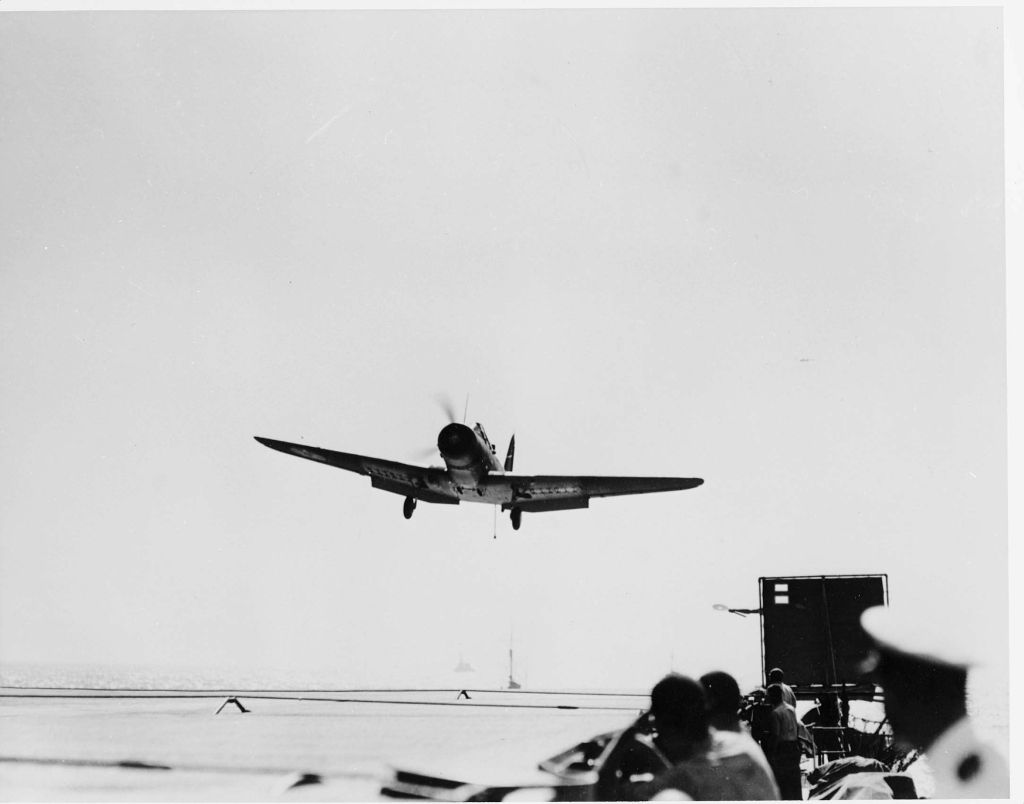







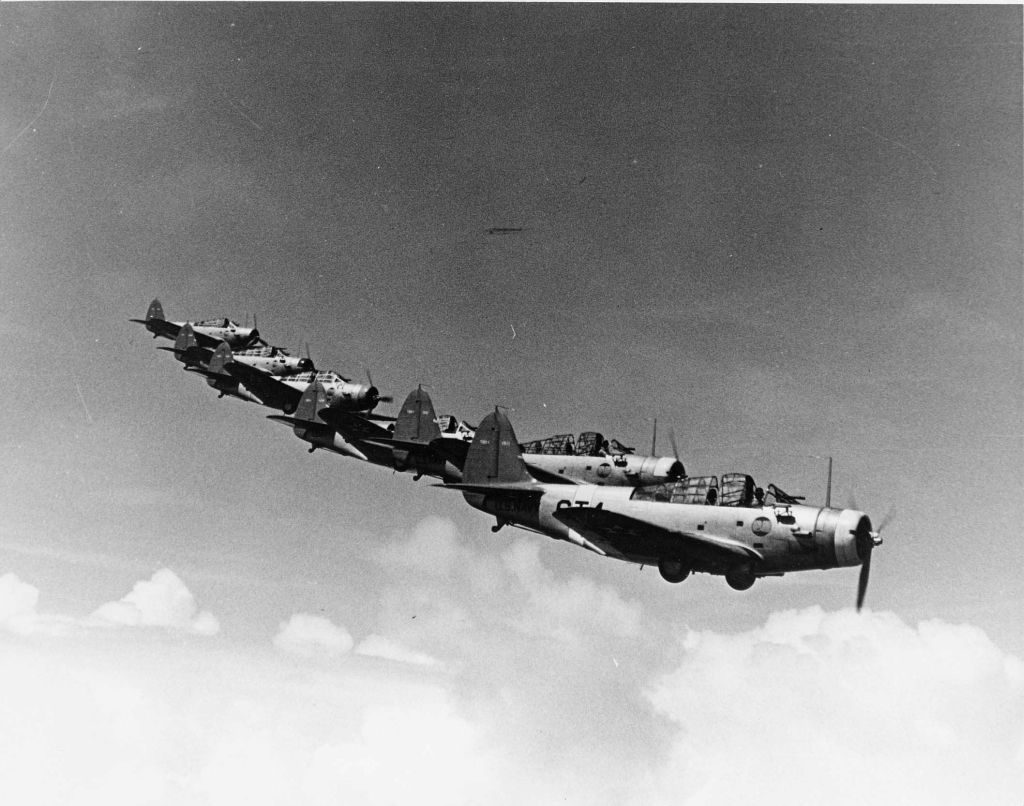

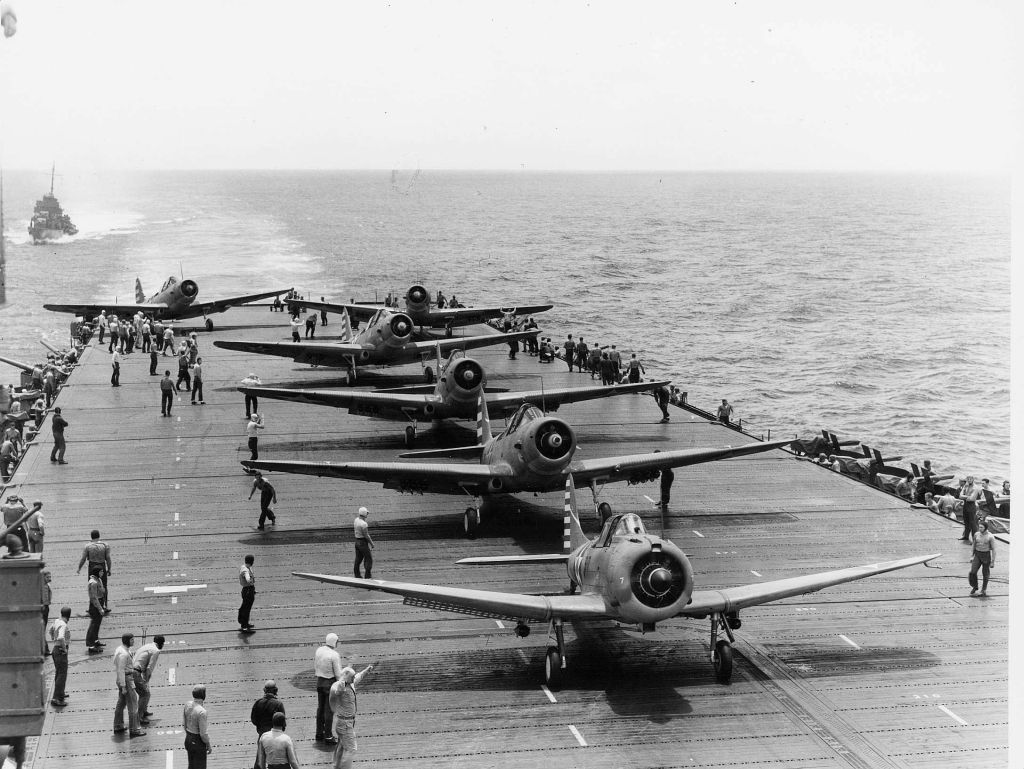









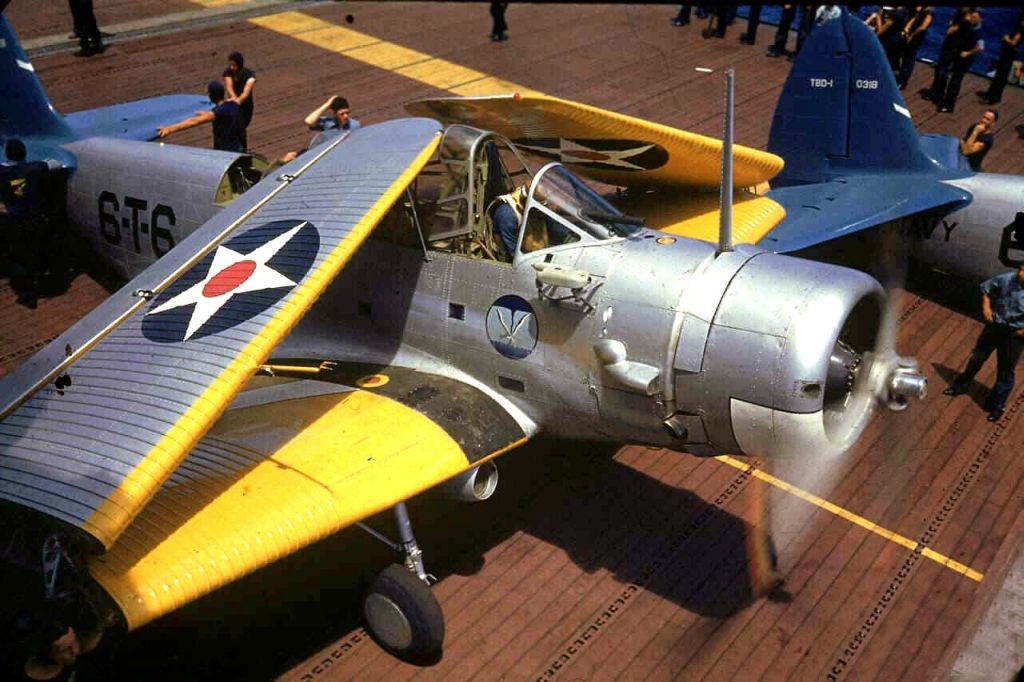


As usual right click and save as for details.
Here's some really neat colour footage taken from the movie "Divebomber" filmed on Enterprise, and at San Diego.
http://www.youtube.com/watch?v=dgKC9VU1-n8
Regards Duggy.
Post a reply
- Go to Previous topic
- Go to Next topic
- Go to Welcome
- Go to Introduce Yourself
- Go to General Discussion
- Go to Screenshots, Images and Videos
- Go to Off topic
- Go to Works in Progress
- Go to Skinning Tips / Tutorials
- Go to Skin Requests
- Go to IJAAF Library
- Go to Luftwaffe Library
- Go to RAF Library
- Go to USAAF / USN Library
- Go to Misc Library
- Go to The Ops Room
- Go to Made in Germany
- Go to Campaigns and Missions
- Go to Works in Progress
- Go to Juri's Air-Raid Shelter
- Go to Campaigns and Missions
- Go to Works in Progress
- Go to Skinpacks
- Go to External Projects Discussion
- Go to Books & Resources
